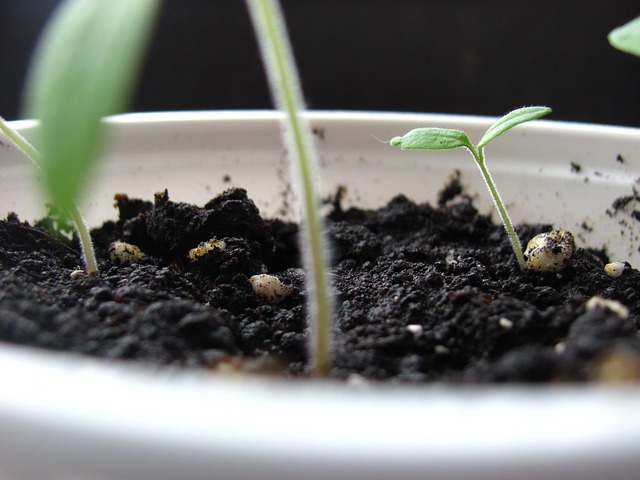
Follow gardening boards on Pinterest and you’ll seen dozens of photos of eggshell starters—that is, eggshells being used as indoor growing pots for seeds before they are ready to be transplanted outdoors.
Eggshells are great containers because they are full of calcium, a key nutrient for growing seedlings. Plus, you can plant the eggshells right into the garden once the soil warms up. Oh, and they cost just pennies per piece at the supermarket (unless you have chickens…in which case you have an endless supply!).
Citrus peels also make for clever indoor pots for growing seeds indoors. They are pretty to look at and they smell nice, too. (Just remember to poke a hole in the bottom to allow water to drain.)
Starting seeds indoors is especially satisfying when you have an itch to get outside and play in the dirt—yet find yourself hampered by cold, wet and rainy winter weather. Start planning now for February and March and by the time it is summer you’ll be harvesting the bounty of all bounties!
The good news is that you don’t need expensive equipment to get seeds off to a good start. Whether you are using eggshells, citrus peels or plain old plastic trays, start by reading your seed packets first. Then, follow these simple tips for starting seeds indoors:
- Find your sunniest location, typically a window facing south or west. Even in the darkest days of winter, young plants need sun—about 12 to 14 hours per day. In all likelihood, you’ll need an indoor grow lamp or an inexpensive fluorescent light to provide supplemental artificial light. Hang lights about 5 inches above plants so that they don’t become weak by having to struggle to get enough light. (As the seedlings grow, adjust the lamps upwards.)
- Keep seedlings warm by maintaining temperatures between 65°F and 72°F. If you have seedlings by a window, be aware of how much sunlight is coming through. Even in the winter, glass can intensify the sun’s rays and burn tender leaves.
- Avoid using garden soil to start your seedlings. Instead, use an organic soil mix that is rich in essential minerals and trace elements. While seedlings grow more slowly indoors than outdoors, they grow rapidly nonetheless. A steady supply of nutrients, like those supplied by all-natural Cascade Minerals Remineralizing Soil Booster, helps ensure more vigorous plant growth resulting in better-tasting and more nutritious herbs.
- Made of 100% natural volcanic basalt, Cascade Minerals Remineralizing Soil Booster also helps improve water retention in potting soil mixes. It is very important to avoid overwatering indoor seed starts. Keep them moist, not wet. If plants seem to be suffering, they are probably getting too much water. Water them less often with water that is at room temperature (not ice cold from the tap).
- Once seedlings begin to sprout and grow to about one inch tall, thin them out to one plant per cell. That’s because overcrowding leads to weakened plants with thin stems and leaves. (Don’t pull seedlings out of the soil; instead, cut them down to the soil line.)
- Before planting them directly into the garden, “harden off” the transplants by placing them on a patio or in a protected outdoor area for a few hours a day about 1-2 weeks before the last frost. This gives young plants a chance to acclimate to the outdoors and protects them from shock.
Voila! You now have healthy, vibrant seedlings that are ready to plant in the garden.
